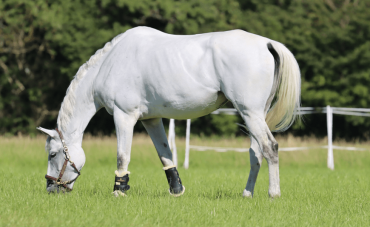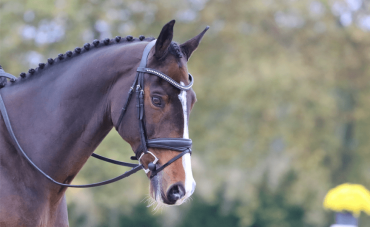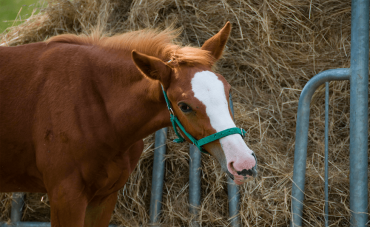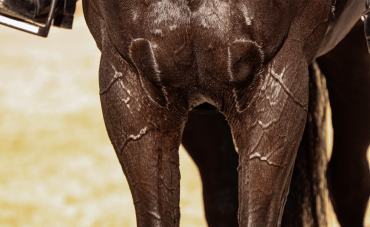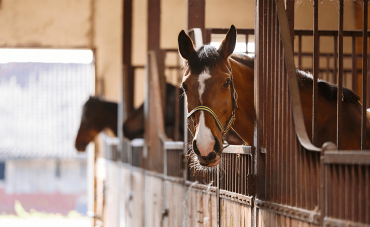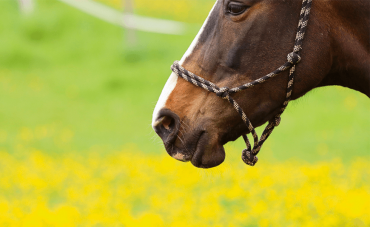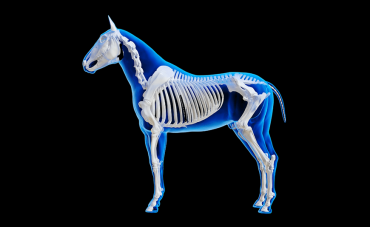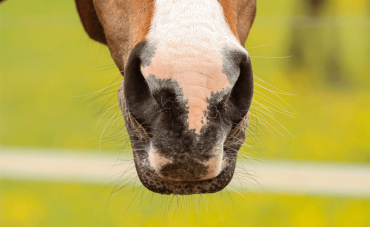What exactly is a bone?
The bones of your horse's body form its skeleton and have several functions. They provide support for the muscles and form the framework for the whole body. They also have a protective role to prevent fragile organs from being exposed to direct trauma. The best example is the skull, which protects the brain. They also have a role in the formation of certain cells, such as blood cells. Bones are made up of proteins, minerals and living cells. A bone is therefore a living organism and will change as time goes by. There are differences in composition depending on the bone in the body: flat bone (scapula), long bone (femur).
What is bone remodelling?
Bone remodelling is a natural process that takes place in the bone and renews it. It can be physiological when part of the bone is renewed or pathological in certain situations such as osteoporosis or osteoarthritis. Remodelling takes place in two main phases:
-
The breakdown phase of the old or damaged bone.
-
The formation phase to replace the removed bone.
This renewal is more efficient in young horses. In senior horses, there is an imbalance between the old bone breakdown and the new bone formation. The breakdown is faster than the formation, which can lead to osteoporosis. In this case the bone is more fragile and the risk of fracture is increased.
What is the link with arthrosis?
In the case of arthrosis, bone remodelling is pathological.
The bones next to the joints are put under great pressure when your horse moves, which may lead to local inflammation. The body will respond to this inflammation by modifying the bone through bone remodelling, but this remodelling may become excessive and may result in :
-
Destruction of bone useful for the joint: osteolysis.
-
The formation of bone that is useless for the joint: osteophyte.
The breakdown and excessive formation of bone will result in a less functional joint because it is "deformed" by these new bone formations. This deformation will lead to new bone stresses and therefore to inflammation and then remodelling: it is a vicious circle (inflammation > remodelling > new bone stresses > inflammation > remodelling...).
Bone breakdown due to bone remodelling is a painful process for your horse, which can result in lameness. Osteolysis and osteophytes can be visible on X-rays but can also be invisible when it comes to the early stages of arthrosis. A horse can therefore have an onset of arthrosis and present pain without having catastrophic X-rays.
It is important to know that all horses will develop arthrosis. It can be minimal and occur at the end of its life, which will be almost without repercussions. But in the majority of cases it will develop over time and can lead to stiffness, reduced performance and even lameness. The joints most often affected are the foot (with the navicular bone), the fetlocks, the hocks, the vertebrae of the back.
How to limit bone remodelling in the case of arthrosis?
The bone remodelling present in arthrosis is a degenerative process. That is to say, it is due to the ageing of the joints. This ageing can be accelerated if the horse initially has imperfect joints or simply if the work of the horse causes this phenomenon to accelerate. A bit like sportsmen and women who have joint problems more quickly than people who do less sport. We cannot ask a horse to stop moving as this would lead to other problems: digestive, ankylosis.
It is therefore necessary to adapt the horse's exercise in order to preserve its joints and limit the development of bone inflammation, which is associated with bone reshaping, thus worsening arthrosis.
To do this, it is best to avoid working on hard ground which will increase the shocks. Warming up your horse allows you to limit the violent movements on a body that has not been warmed up, which can cause trauma. After the session, a cold shower or a cold bath of the limbs (in a river, pond...) will have a cooling effect and help reduce the inflammation of your horse's joints. The care of your horse's hooves is also important because it has a direct effect on the joints. Long hooves should therefore be avoided and some types of trimming or shoeing can help to soothe the horse with joint problems.
If the pain caused by arthrosis is too great, medical treatment can be used. Some drugs will treat the inflammation but will have no effect on bone remodelling, such as oral anti-inflammatory drugs or injections such as corticosteroids, platelet-rich plasma, intra-articular injections or stem cells. There are also treatments that will have a direct effect on bone remodelling such as bisphosphonates. Your veterinarian will be able to advise you.

